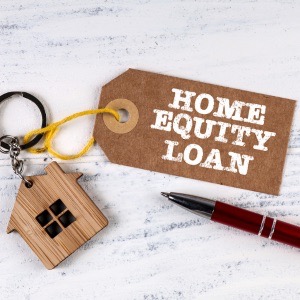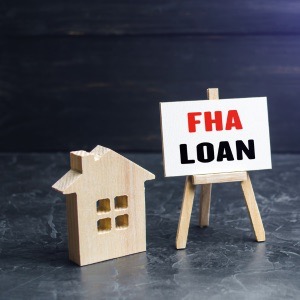Renovate Smart: Austin’s Guide to the Best Home Improvement Loans and Financing Options Available (2025)
Renovating your home can be an exciting way to increase its value and enhance your living space—but figuring out how to finance those improvements? That’s where many homeowners get stuck. With so many financing options available, it can feel overwhelming. Where do you even start with a home improvement loan?
If you’re a homeowner in Austin, it’s especially important to make smart financial decisions when renovating. With the housing market stabilizing and some experts predicting a slight decline in home values, now may be the perfect time to invest in improvements that can help maintain or even increase the value of your home.
In this guide, we’ll walk you through all the different financing options for your home improvement projects. Whether you’re upgrading your kitchen, adding a new deck, or making energy-efficient improvements, we’ve got you covered. Let’s dive in!
Step 1: Assessing Your Home Improvement Needs

Before you think about financing, it’s important to assess your home improvement needs. What are your goals? Are you looking to make necessary repairs, enhance the functionality of your space, or increase your home’s market value? Understanding your priorities will help you decide which projects to focus on and how much financing you might need.
High-ROI Projects for Austin Homeowners
If you’re considering financing home improvements, focusing on high-return-on-investment (ROI) projects is key. Here are some examples:
- Kitchen Remodels: A fresh, updated kitchen is always a great investment, especially in a food-centric city like Austin.
- Bathroom Upgrades: Modernizing your bathrooms can add significant value to your home.
- Energy-Efficient Installations: In Austin’s hot climate, energy-efficient improvements like new windows or a smart thermostat can lower utility bills and attract eco-conscious buyers.
On the other hand, luxury amenities like custom landscaping or extravagant additions may not give you the same ROI. Prioritize projects that are essential or add significant value to your home.
Not sure which projects will give you the most value? Contact Sky-Lan for a complimentary consultation to help you prioritize your renovations.
Step 2: Understanding Your Financing Options
When it comes to financing home improvements, you have several options. The right choice depends on your project size, budget, and financial situation.

Home Equity Loans
A home equity loan lets you borrow against the equity you’ve built up in your home. It’s a great option for larger, one-time projects like a full kitchen remodel or adding an outdoor deck.
- Pros: Fixed interest rates, predictable payments.
- Cons: You’re using your home as collateral, so it’s important to make sure you can handle the payments.
Actionable Step: Wondering how much equity you have in your home? Use this home equity calculator to find out.
Or check out these options:
Velocity Credit Union- Home Equity Loans
Austin Telco Federal Credit Union- Home Equity Loans
Home Equity Line of Credit (HELOC)
If your project will be done in stages, a HELOC might be a better option. With a HELOC, you can borrow against your home’s equity but only take out what you need, when you need it. It’s perfect for ongoing or long-term projects.
- Pros: Flexibility to withdraw funds as needed.
- Cons: Variable interest rates, which can fluctuate over time.
Actionable Step: Learn more about HELOC from Nerd Wallet or try their HELOC calculator.
Personal Loans for Home Improvement
For smaller projects, a personal loan can be a good option. Personal loans don’t require home equity and typically have fixed interest rates, making them ideal for quick projects like upgrading your bathroom or installing new flooring.
- Pros: No home equity required, fixed payments.
- Cons: Higher interest rates than home equity loans or HELOCs.
Actionable Step: Compare personal loan rates with this personal loan tool.
Or check out these options:
Texas First Bank- Home Improvement Loans
Frost Bank- Home Improvement Loan
Government Repair Loans & Grants
There are several government-backed loans and grants available for different kinds of home improvements.
1. FHA Title I Home Improvement Loan

- Type: Federal loan
- Amount: Up to $25,000
- Purpose: Financing home repairs and improvements.
- Eligibility: No home equity required.
2. FHA 203(k) Rehabilitation Loan
- Type: FHA-backed mortgage
- Amount: Based on post-renovation value
- Purpose: For buying and renovating homes in one loan.
- Eligibility: Suitable for significant home repairs or buying fixer-uppers.
3. USDA Single Family Housing Repair Loans & Grants (Section 504)
- Type: Federal loan/grant for low-income homeowners
- Amount: Loans up to $40,000, grants up to $10,000
- Purpose: Home repairs and removing safety hazards.
- Eligibility: Low-income, rural areas (many in Central Texas qualify).
4. Texas Department of Housing and Community Affairs (TDHCA) Home Repair Assistance
- Type: State-level assistance programs
- Purpose: Weatherization and critical repairs.
- Eligibility: Low-income households.
- More Info: Apply through local agencies contracted with TDHCA.
5. Veterans Land Board (VLB) Home Improvement Loans
- Type: VA loans and grants
- Purpose: Home adaptations for veterans with service-connected disabilities.
- Eligibility: Service-connected disabled veterans
6. Local Government Grants (Austin and Surrounding Areas)
- Many local Texas counties and cities offer specific programs for low-income residents or specific communities. For example:
- City of Austin Home Repair Programs:
- Go Repair! Grant Program: Provides repairs for low-income homeowners.
- Austin Energy Residential Energy Efficiency Program: Offers rebates and incentives for energy-efficient home improvements.
- Home Rehabilitation Loan Program: up to $75K for repairs to bring the home up to code.
- See Other home repair programs available to those in Austin.
- Travis County Home Repair Program: Offers emergency repair services for low-income families.
- City of Austin Home Repair Programs:
- Eligibility: Often based on income level and geographic location.
- Use Cases: Emergency repairs, energy-efficient upgrades, critical home improvements.
- Where to apply: Local housing authorities or city government offices.
7. Energy-Efficient Mortgages (EEMs)
- Type: Federal program
- Purpose: Finance energy-efficient home improvements within a mortgage.
- Eligibility: For new or refinanced mortgages.
- More Info: Apply through FHA or conventional lenders.
8. Federal Housing Rehabilitation Loan and Grant Programs (CDBG and HOME)
- Type: Federal block grants to local governments
- Purpose: Home repairs, safety modifications for low-income homeowners.
- Eligibility: Income-based, varies by locality.
- More Info: Apply through city or county government.
9. US. Dept of Housing and Urban Development- other Texas options
- See more programs and resources that help homeowners with home repairs and improvements.
Step 3: Applying for Home Improvement Loans

Once you’ve chosen a financing option, it’s time to apply. Here’s what you’ll need to do:
Credit Requirements
Most lenders will require a credit score of 620 or higher for favorable loan terms. If your score is lower, you may still qualify, but at a higher interest rate.
Actionable Step: Check your credit score for free at AnnualCreditReport.com and see where you stand.
Gathering Documentation
Make sure you have all the necessary paperwork ready, including:
- Income verification (pay stubs or tax returns)
- Project estimates
- Home appraisal documentation
Comparing Lenders
Don’t just accept the first offer you receive. Shop around to get the best rates and terms.
Actionable Step: This Forbes article and this Nerdwallet article both share quick comparisons of the best home improvement loans as of October 2024.
Step 4: Budgeting for Your Project

Creating a detailed renovation budget is essential for any home improvement project. Make sure you account for labor, materials, permits, and contingencies (typically 10-20% over your estimate).
Actionable Step: Use this free renovation budget template to create a realistic estimate for your project.
Understanding ROI
In Austin’s market, it’s more important than ever to choose projects that will give you a solid return on your investment. Remodeling’s Cost vs. Value Reportaustinaustin is a great resource for finding out which projects have the highest ROI.
Not sure how much your project will cost or what kind of return you’ll get? Sky-Lan can provide you with a free estimate and help you plan your renovation budget.
Step 5: Navigating the Austin Housing Market
Austin’s housing market is stabilizing, and home values may decline slightly over the next year. This means that now could be the perfect time to invest in home improvements that will help preserve or increase your home’s value. Focus on strategic projects like energy-efficient upgrades or kitchen remodels to get the most bang for your buck.
Key Takeaway: Investing in essential improvements can help you maintain your home’s value as the market cools.
Step 6: Alternative Ways to Fund Your Project
If traditional loans aren’t the right fit for you, there are alternative financing options to consider:
Cash Savings
Using your savings can be a great option for smaller projects, but make sure you leave enough for emergencies.
Credit Cards
For smaller projects, credit cards with 0% APR promotional rates can be useful. Just be cautious of high interest rates if you don’t pay off the balance during the promotional period.
Home Improvement Retailer Financing
Retailers like Home Depot or Lowe’s often offer financing options for smaller projects. This can be a good way to get what you need for DIY projects or smaller upgrades.
Actionable Step: Check out Home Depot’s financing offers or Lowe’s financing programs.
Step 7: Tax Incentives & Rebates

Don’t forget that certain home improvements may qualify for tax deductions or rebates, especially if they’re energy-efficient upgrades. Be sure to take advantage of these programs to save even more money on your renovation.certain home improvements may qualify for tax deductions or rebates, especially if they’re energy-efficient upgrades. Be sure to take advantage of these programs to save even more money on your renovation.
- Tax Deductions: For eligible home improvements, check out this IRS page.
- Energy-Efficient Rebates: Check out the EnergyStar rebate finderskyss to see if your project qualifies.
FAQs
Can I get a home improvement loan with bad credit?
Yes, but your options may be limited, and interest rates will likely be higher.
What’s the best loan option for a bathroom remodel?
A personal loan or HELOC is often ideal for mid-sized projects like bathroom renovations.
Will my home improvement add value to my home in the current market?
Yes, but focus on high-ROI projects like kitchen remodels and energy-efficient upgrades.
Final Tips for Financing Success
To ensure your home improvement project goes smoothly, choose the right financing option based on your project size, financial situation, and the current Austin housing market.
And remember, working with experienced professionals like Sky-Lan Construction can help make the renovation process stress-free- we offer complimentary estimates and we stick to them!
Ready to start your next home improvement project? Contact Sky-Lan Construction today for a free consultation and personalized advice on how to finance and plan your renovation.
